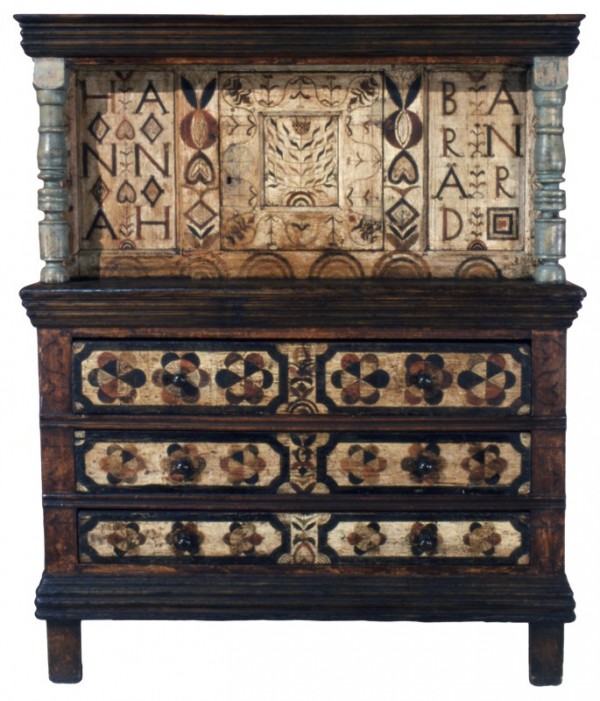
Cupboard, Hadley, Massachusetts, ca. 1715. Oak, maple, chestnut, and yellow pine. H. 61 1/8", W. 50", D. 21 1/4". (From the Collections of The Henry Ford Museum.)
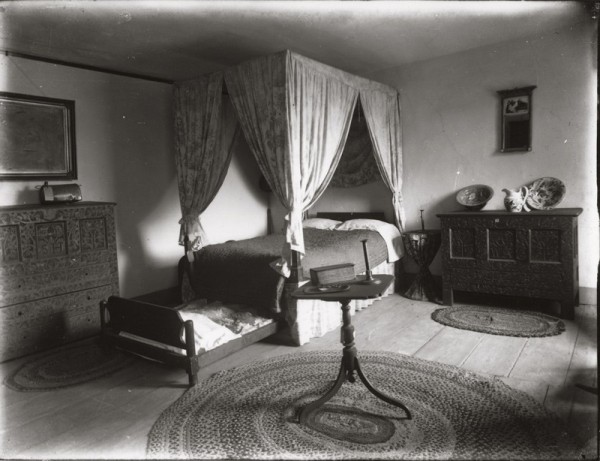
Photograph taken in the early twentieth century showing the WA and SH chests in a bedroom at Memorial Hall, Deerfield, Massachusetts, ca. 1910. (Courtesy, Memorial Hall, Pocumtuck Valley Memorial Association.)
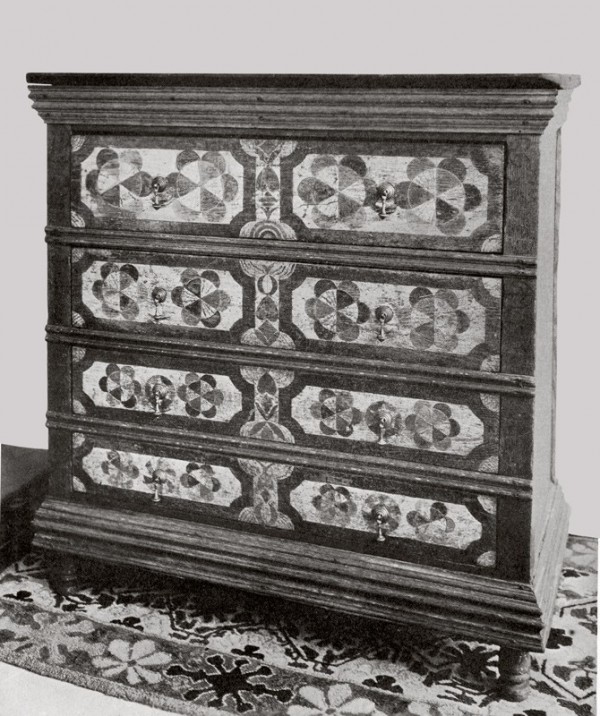
Hadley chest illustrated and discussed in Antiques 10, no. 3 (September 1926): 189–90 (Courtesy, Antiques.)
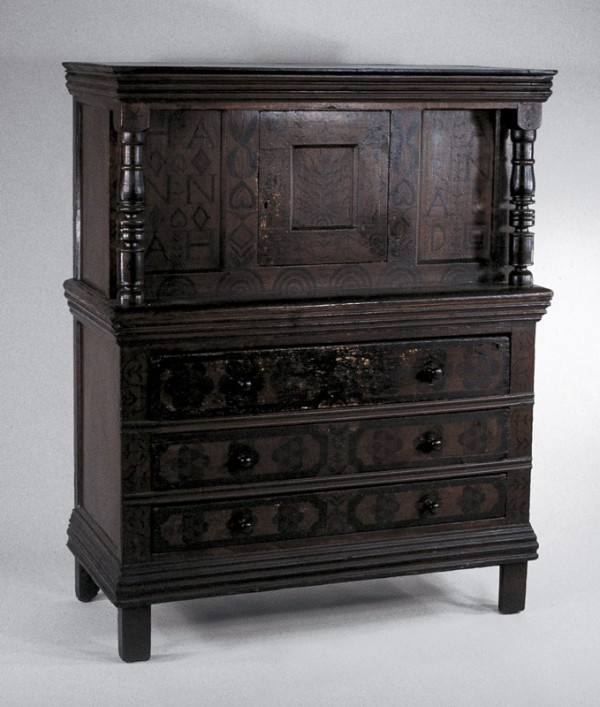
Preconservation view of the cupboard illustrated in fig. 1.
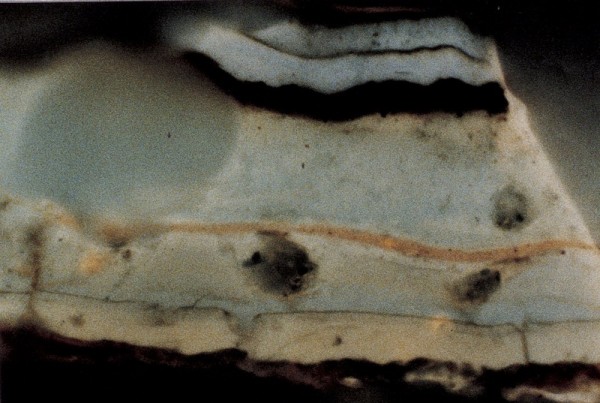
Cross-section sample taken from a red-painted design on a drawer front of the Hannah Barnard cupboard at 200X in reflected ultraviolet light. This sample was taken before conservation in 1991.
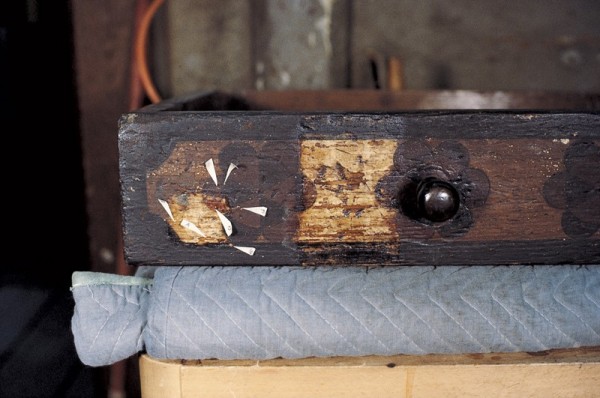
Trial cleaning on a drawer front with sample locations noted to assess the level of varnish and overpaint removal.

Cleaning the upper case of the Hannah Barnard cupboard using isopropanol gel and swabs.

Detail of the left panel during conservation of the cupboard illustrated in fig. 1.

35mm photograph of a cross-section sample taken from a degraded blue-green design on a drawer front of the Hannah Barnard cupboard at 500X in reflected visible light. This sample shows a coarsely ground layer of blue verditer pigment in a resinous binder on top of the white background paint. This sample was taken from a cleaning test area in a blackish design area of the compass-drawn decoration on a drawer front. Remnants of the varnish layer above the pebbly blue paint reveal that some of the earliest film finish was left intact in the cleaning process.

Digital photographs of a cross-section sample (HB-1) taken from a red-orange design behind the right column of the Hannah Barnard cupboard at 200X in reflected visible light (left), reflected ultraviolet light (middle), and with the flurochrome stain DCF to tag saturated and unsaturated lipids (right). This sample was taken in 2008 from a site intentionally left uncleaned during conservation in 1991.

SEM-EDS analysis of the sample illustrated in fig. 10. These images show the distribution of elements in the white background and red-orange decoration. Vermilion in the red-orange layer is confirmed by the presence of mercury which appears as green in the elemental map. (Photo, Catherine Matsen.)
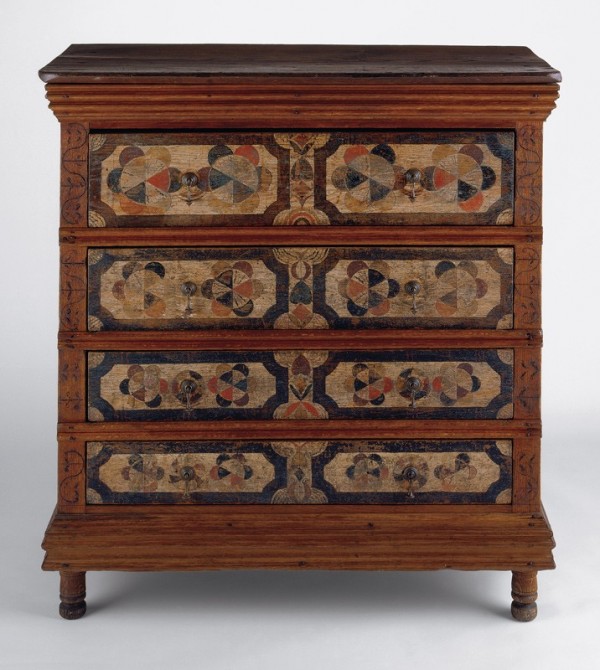
Chest, Hadley, Massachusetts, ca. 1715. Red oak, white oak, and chestnut with pine. H. 42 1/4", W. 43 1/2", D. 20 1/2". (Courtesy, Winterthur Museum.)
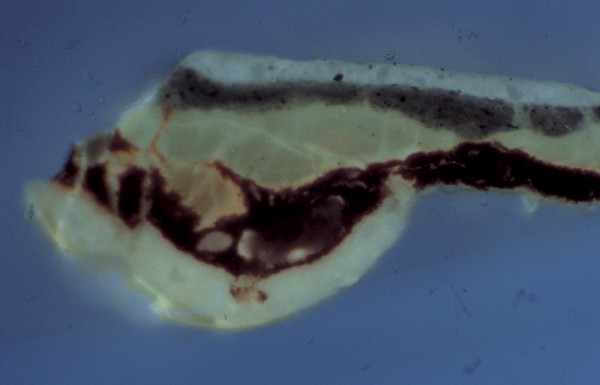
35mm photograph of a cross-section sample taken from a deep red area of a compass-generated motif on a drawer front of the chest illustrated in fig. 12 at 250X in reflected ultraviolet light. Two layers of finely ground overpaint are visible on top of a cracked, degraded plant resin varnish and a damaged red paint layer on the white background paint. This sample was taken in 1991.
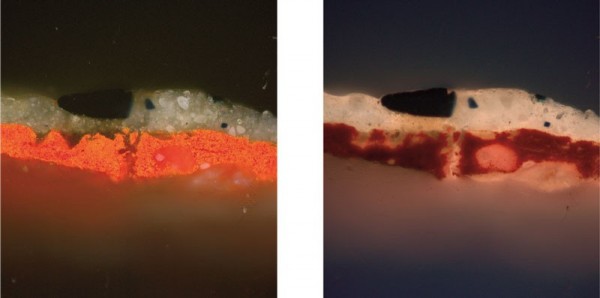
Digital photographs of a cross-section sample (W-1) taken from a red-orange area of a compass-generated motif on a drawer front of the chest illustrated in fig. 12 at 250X in reflected visible light (left) and reflected ultraviolet light (right). A coarsely ground blue-gray paint sits directly on top of the original plant resin varnish, which is thin and degraded. The varnish covers the red-orange paint and white background paint beneath it. This sample was taken in 2008.

SEM-EDS analysis of the sample illustrated in fig. 14. These images show the distribution of elements in the layers. Vermilion in the red-orange layer is confirmed by the presence of mercury which appears as green in the elemental map. (Photo, Catherine Matsen.)
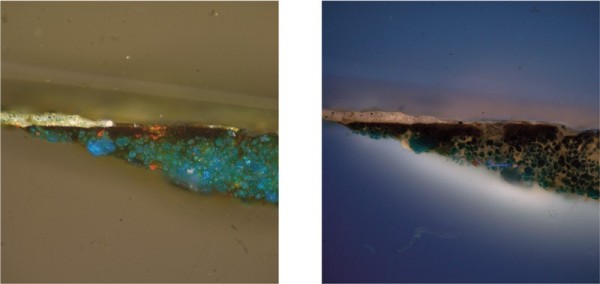
Digital photographs of a cross-section sample (W-3) taken from the painted vine on the left front stile of the chest of drawers illustrated in fig. 12 at 200X in reflected visible light (left) and reflected ultraviolet light (right).

SEM-EDS analysis of the sample illustrated in fig. 16. These images show the distribution of elements in the layers. Blue verditer is confirmed by the presence of copper which appears as blue-green in the elemental map. (Photo, Catherine Matsen.)
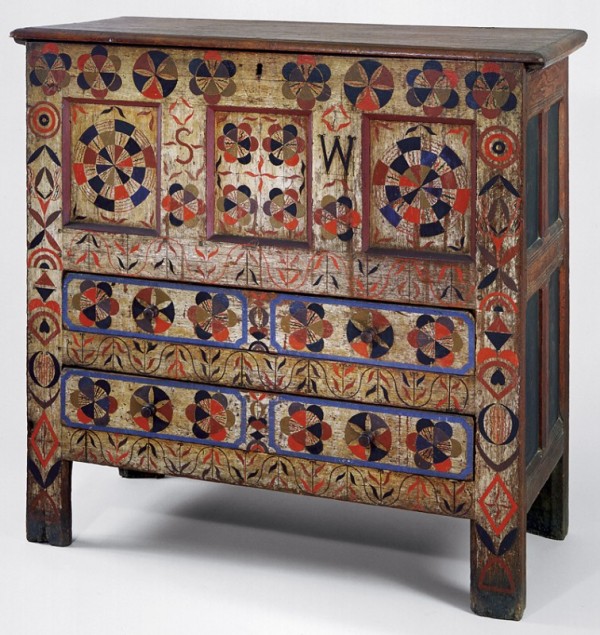
Chest, Hadley, Massachusetts, ca. 1715. Oak and pine. H. 43 1/4", W. 45", D. 19 1/2". (Courtesy, Memorial Hall, Pocumtuck Valley Memorial Association; photo, Amanda Merullo.)
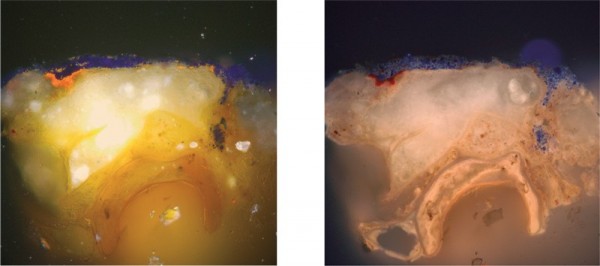
Digital photographs of a sample (SW-1) taken from a repainted blue area of a compass-generated motif on the right front panel of the chest illustrated in fig. 18 at 400X in reflected visible light (left) and reflected ultraviolet light (right). The cross section shows that this area was originally red-orange on a white base coat and that it was repainted after the red-orange layer had become worn and cracked.

SEM-EDS analysis of the sample illustrated in fig. 19. These images show the distribution of elements in the layers. Vermilion in the red-orange layer is confirmed by the presence of mercury which appears as green in the elemental map image. (Photo, Catherine Matsen.)

Digital photographs of a sample (SW-6) taken from a repainted triangular design on the worn area of the left front foot of the chest illustrated in fig. 18 at 200X in reflected visible light (left) and reflected ultraviolet light (right).
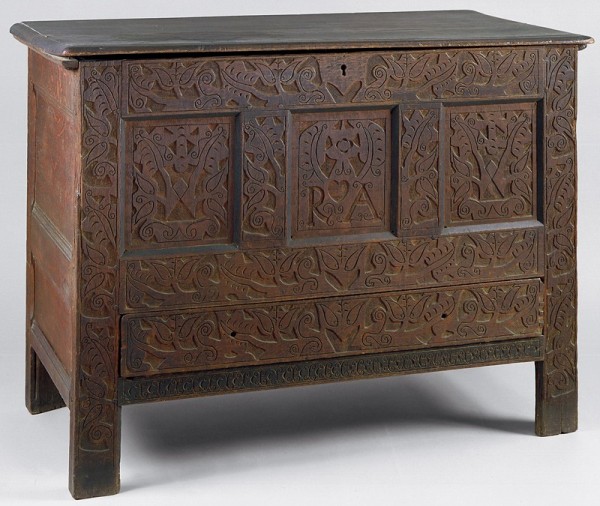
Chest, Hadley or Hatfield, Massachusetts, 1695–1715. Oak and yellow pine. H. 33 3/4", W. 47 1/4", D. 20 3/4". (Courtesy, Memorial Hall, Pocumtuck Valley Memorial Association; photo, Amanda Merullo.)
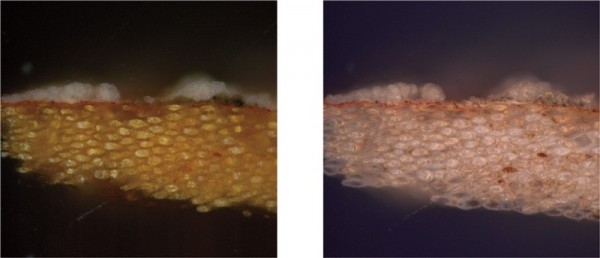
Digital photographs of a sample taken from the upper left corner of the left panel of the chest illustrated in fig. 22 at 400X in reflected visible light (left) and reflected ultraviolet light (right). This sample shows that the chest initially received a very thin coat of red-pigmented paint. The uneven layer of degraded plant resin varnish directly above the paint is early and probably original. The white haze on the surface is accumulated paste wax.
